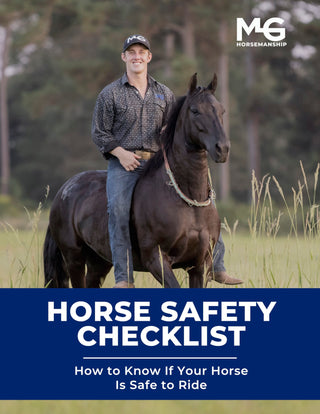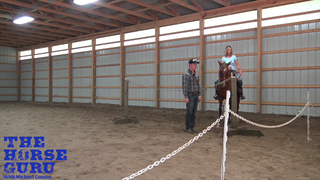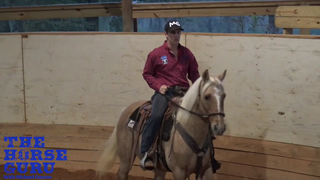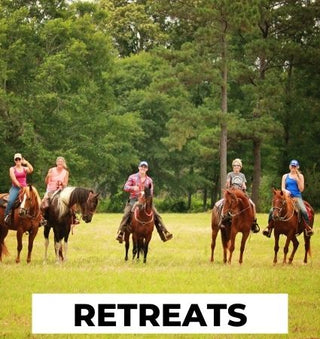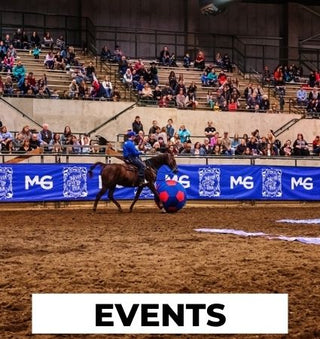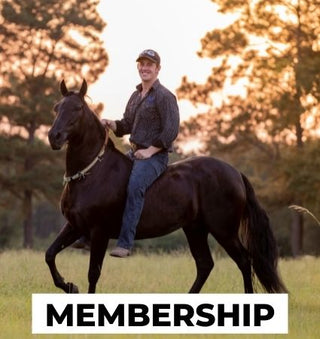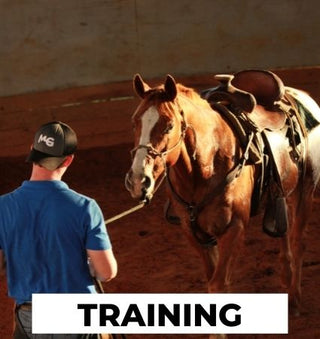Watch the Video Here or continue reading below!
Patience isn’t just a virtue; it’s a game-changer when it comes to working with horses. A patient horse isn’t born—they’re made through consistent training and thoughtful routines. One of the simplest yet most effective ways to develop this essential skill is by incorporating "tie time" into your horse’s daily life.
Hi, I’m Michael Gascon, and today I’m going to share why tie time is a foundational part of my horse-training process. Whether you’re dealing with a restless colt or a seasoned trail horse, tie time can transform your partnership and make your horse safer, calmer, and more reliable.
What Is Tie Time?
Tie time is exactly what it sounds like: time spent tying your horse in a secure spot and letting them wait. It’s not about making them uncomfortable or punishing them—it’s about teaching them to relax, be still, and trust their surroundings.
Horses are naturally active animals, constantly moving and grazing. When we ask them to stand still, it’s not always easy for them. Tie time gives them the opportunity to adapt to this new expectation, making them more patient and forgiving in the long run.
Why Patience Matters
A patient horse is a safer horse. Whether you’re on a trail ride, loading them into a trailer, or tying them outside the arena, having a horse that can stand quietly without pawing or fidgeting is invaluable.
Think about it: The first time many horses experience prolonged stillness is when they’re tied at a busy trailhead or a trailer. If they’ve never practiced standing quietly at home, they’re likely to act out in these high-stress situations. Tie time helps prepare them for these moments so they can handle them with calmness and confidence.
How to Incorporate Tie Time
Here’s how I make tie time a regular part of my training routine:
1. After Bathing
Every time I bathe a horse, I tie them up to dry. This takes about an hour to an hour and a half. If the horse is restless—pacing, pawing, or dancing—they stay tied longer while I work another horse. This simple habit reinforces patience.
2. Choosing the Right Tying Spots
I always tie my horses to secure, immovable objects. Some of my favorites include:
- Sturdy hitching posts concreted into the ground
- Telephone poles
- Trees with swivels
- Solid deck railings
The key is to use spots where the horse can’t break free or damage anything.
3. Keeping Them Comfortable
Patience training isn’t about discomfort. I always tie my horses in the shade, apply fly spray to keep bugs away, and ensure they have everything they need to relax.
Lessons From Working Horses
If you need proof that tie time works, just look at Amish or ranch horses.
- Amish horses spend hours tied in tie stalls when they’re not working. They learn to stand quietly, knowing that their job might involve long periods of stillness between tasks.
- Ranch horses are either being ridden or tied. These horses know how to turn on and off quickly—when they’re not in action, they’re relaxed and patient.
Both examples show how routine and consistency build dependable, calm horses.
Real-Life Benefits of Tie Time
At my barn, every horse benefits from tie time. Whether they’re tied in the tack room while waiting for their turn or outside the arena watching the world go by, this time helps them adjust to different environments.
For example, when horses are tied near the arena, they’re exposed to the sounds of traffic, other horses, and people walking past. This exposure desensitizes them and makes them more adaptable.
The Takeaway
Tie time is one of the simplest yet most effective tools for building patience in your horse. It teaches them to relax, trust their surroundings, and handle new situations with ease.
The more you incorporate tie time into your horse’s routine, the more patient, confident, and forgiving they’ll become. It’s a small investment of time with a big payoff—both for you and your horse.
So, go ahead and give it a try. Tie your horse, let them wait, and watch as they grow into the calm, reliable partner you’ve always wanted.
Get the training and support you need—join the Horse Help Challenge now HERE!



